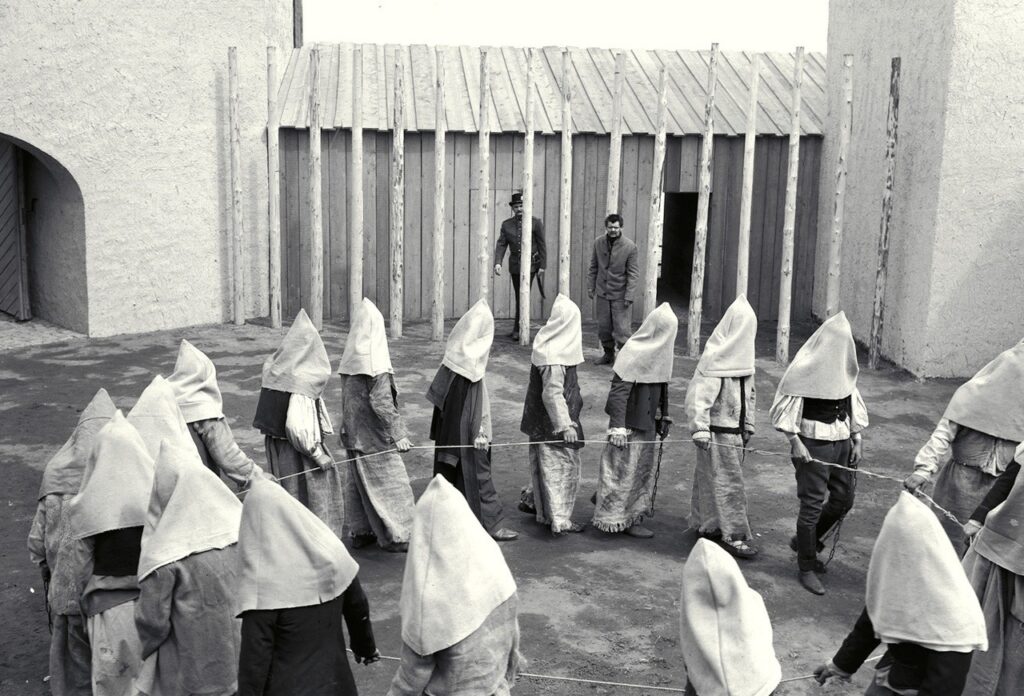
Miklós Jancsó’s Szegénylegények (1966) is one of those films that makes up the upper echelon of cinematic achievement. It’s been praised as a “classic” a “must-see” and has been a tremendous influence on every generation of filmmakers that has come since its release. Szegénylegények (or The Round-Up in english) is a film about political corruption, paranoia, isolation and abuse; linking it explicitly with My Way Home (1965) and The Red And The White (1967). (In fact all three films have been released in one package by Second Run on all region DVD).
It’s true that Béla Tarr has called Miklós Jancsó “the greatest Hungarian filmmaker who has ever lived” and anyone familiar with the work of both directors can clearly see why. Tarr builds on Jancsó’s aesthetic; the long takes, the elaborate blocking and choreography, the puszta, and the high contrast black and white cinematography.
However, Szegénylegények is, actually, a transitional film for Jancsó. The director’s style would shift even more towards the formal and theatrical in his later films Red Psalm (1971) and Electra, My Love (1974). Szegénylegények is, therefore, one of Jancsó’s more accessible features; suggesting simultaneously the more “commercial” films that Jancsó would make in Italy. Szegénylegények shows signs of the development of the style that Tarr would adopt and expand upon as well as betraying Jancsó’s own preoccupation with sado-masochistic relationships which mark his Italian period. Watching Szegénylegények one can clearly see Jancsó’s next film being either Private Vices, Public Virtues (1976) or something more like Electra, My Love.
Miklós Jancsó is one of the giants of world cinema and Szegénylegények makes for a terrific introductory film. No doubt fans of Eastern European cinema will be able to spot similarities between Szegénylegények, Larisa Shepitko’s The Ascent (1977) and František Vláčil’s Marketa Lazarová (1967).
